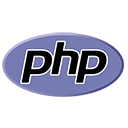Creating your own PHP MVC framework is a valuable exercise to understand how popular PHP frameworks work, like Laravel or Symfony. In this guide, we'll provide an overview of the components and how they interact within an MVC framework, along with a simple example:
1. Introduction to MVC Frameworks
MVC is a design pattern that separates an application into three interconnected components: Model, View, and Controller. The framework's main purpose is to manage the flow of data and the interaction between these components.
2. Key Components of a Custom PHP MVC Framework
2.1. Model (Data Layer)
The Model represents the data and business logic. It interacts with the database and provides data to the Controller. In our example, we'll use a simple array as the data source.
2.2. View (Presentation Layer)
The View is responsible for rendering the data to the user. In our case, we'll use PHP templates to display data to the user.
2.3. Controller (Application Logic)
The Controller handles user input, processes requests, and manages the Model and View. It serves as the intermediary between the Model and View. The Controller will interpret the user's actions and respond accordingly.
3. Example: Basic PHP MVC Framework
3.1. Model
Let's create a simple Model representing a list of items. This data could be fetched from a database in a real-world application.
class ItemModel {
public function getAllItems() {
// Simulated data
return ['Item 1', 'Item 2', 'Item 3'];
}
}
?> 3.2. View
Create a View that displays the items using a PHP template:
class ItemView {
public function renderItems($items) {
foreach ($items as $item) {
echo "$item
";
}
}
}
?> 3.3. Controller
The Controller receives user input, fetches data from the Model, and passes it to the View:
class ItemController {
public function displayItems() {
$model = new ItemModel();
$view = new ItemView();
$items = $model->getAllItems();
$view->renderItems($items);
}
}
?> 4. Conclusion
Building a custom PHP MVC framework is a fundamental exercise for understanding the structure of modern PHP frameworks. In a real-world scenario, you would need to implement routing, handling user input, and more complex features. This example serves as a starting point for your framework development journey.

